- The Tynan Files
- Posts
- No, the Pentagon is not on fire
No, the Pentagon is not on fire
But our ability to tell fact from fiction is quickly going down in flames.
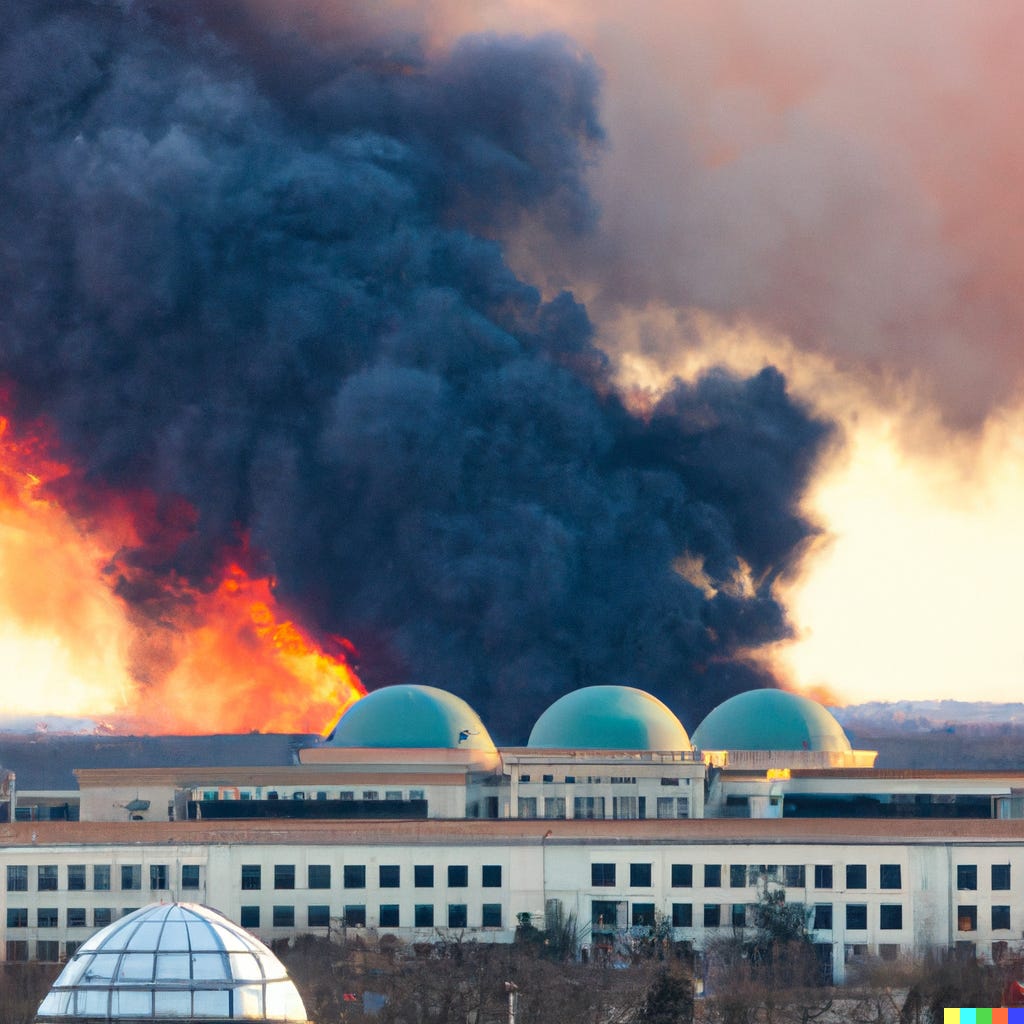
Liar, liar (not) the Pentagon on fire. Source: DALL-E.
On Monday of this week, a photo purporting to show a large explosion near the Pentagon appeared on Facebook, causing a lot of confusion, angst, and knickers-in-a-knot all over the world.
It quickly made its way to Twitter, where it was retweeted by multiple “blue check” accounts (including one pretending to be from Bloomberg) and some alleged news sources, including Russia Today. Digital outlets in India carried the news. It even caused the stock markets to take a brief dive.
And, of course, it wasn’t true. There was no blast near the Pentagon. The photo was apparently an AI-generated fake. [1] The S&P Index, which dropped 30 points on the news, eventually recovered.
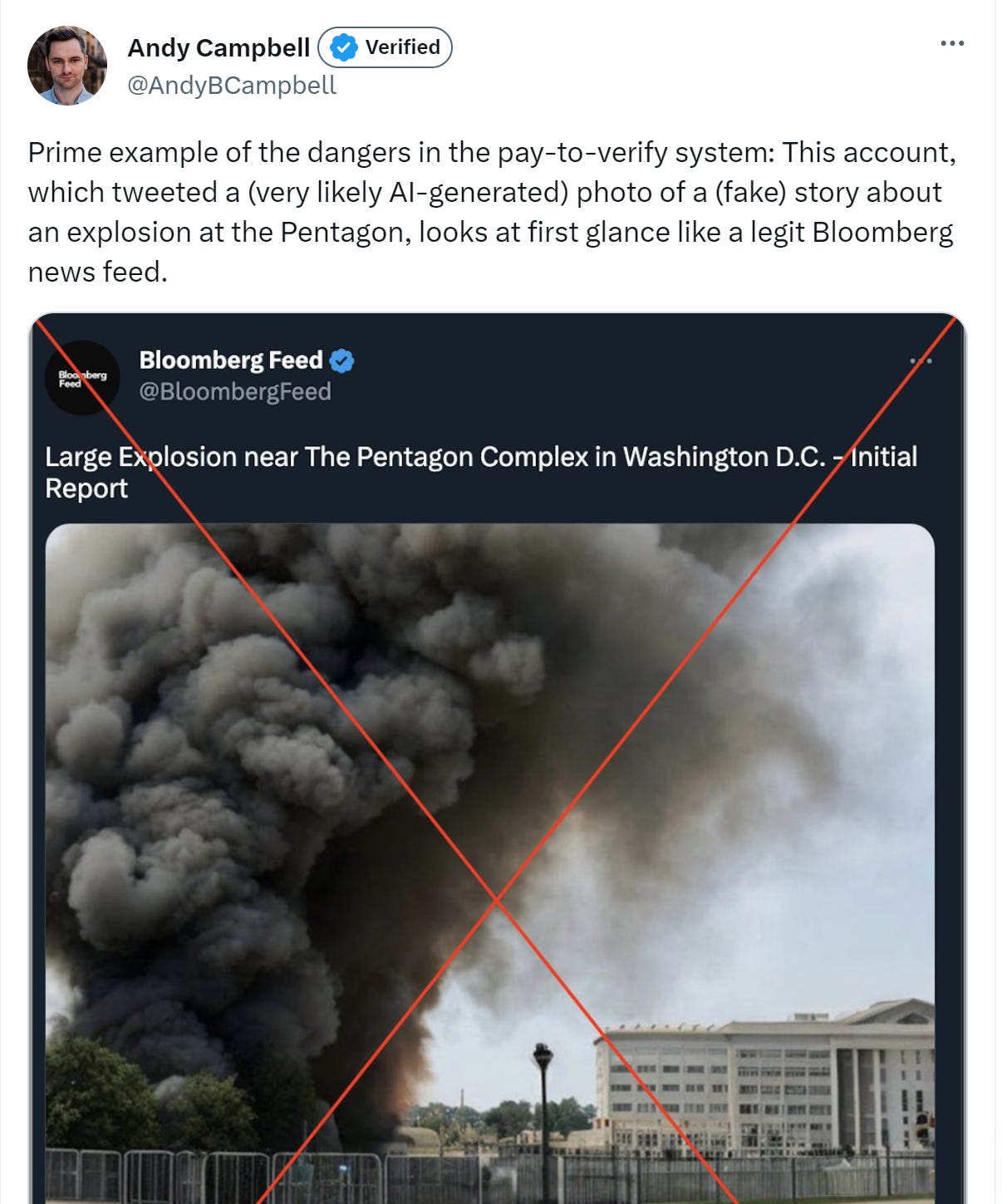
It wasn’t the first (alleged) AI fake to fool a lot of people on social media. It will by no means be the last. But it does illustrate how hard it’s going to be to separate fact from fantasy as we stumble tits over teakettle [2] into the mid-21st century.
Faked and baked
Several amateur sleuths on Twitter immediately pointed out flaws in the photo (like the lamp post that appears to be both in front of and behind the iron fence, or windows that appear to be melting).
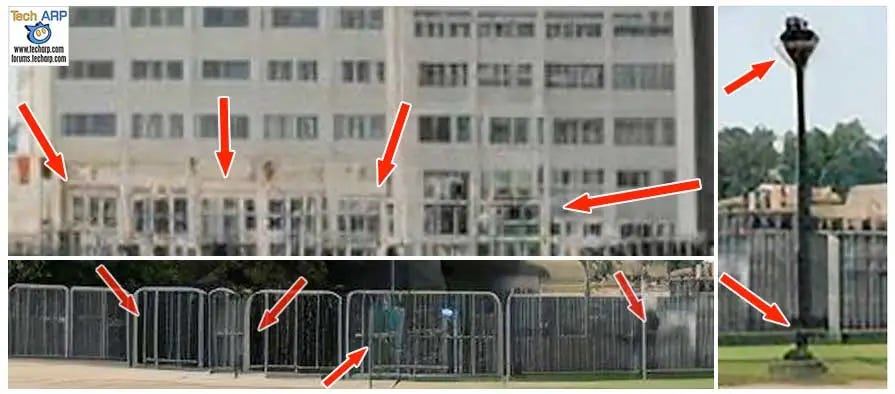
The arrows are flying in every direction. Source: TechArp
Also: The fact that the building in the image bears no resemblance to the actual Pentagon suggests that the person who created this image has no idea what the Pentagon looks like (or even the meaning of the word ‘pentagon’.) And that suggests that it is the work of someone not born or living in this country, and also not a foreign intelligence service (whom you would presume would do a better job of it).
This is either a prank or a deliberate but poorly executed psyop [3]. One clue are the seemingly random, unconnected accounts issuing the same tweet, down to the oddball capitalization scheme. That’s what Tweets generated by a Twitter bot farm look like.
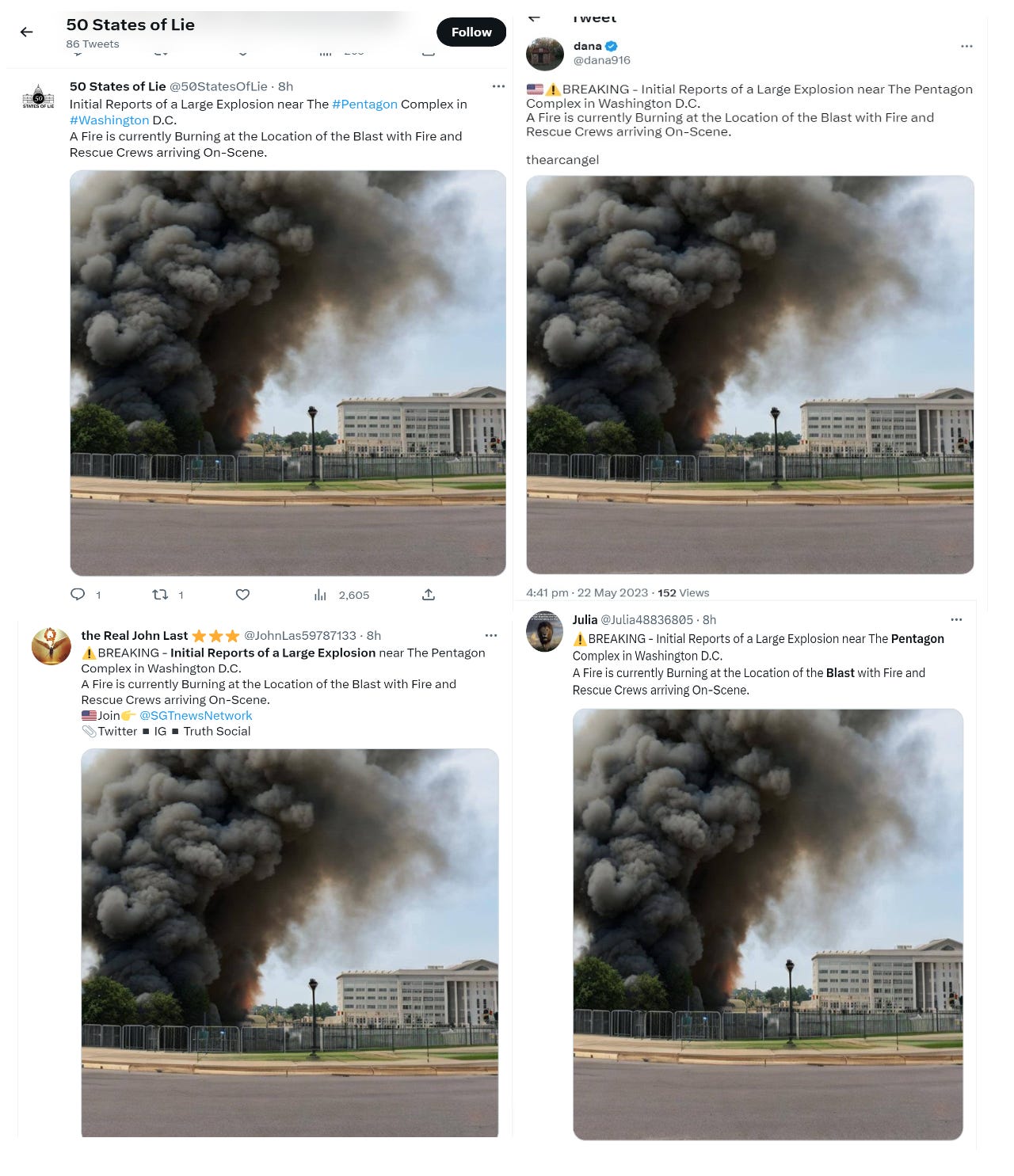
The fact that this was outed as fake within a few hours should not provide anyone with comfort. There’s zero guarantee that everyone who sees a false report will also see the corrected version (or believe it, when they do). And as generative AI gets better, and more skilled practitioners of psychological warfare adopt it as a weapon, these fakes will get harder and take longer to detect. If the intent is only to cause chaos for a few hours (like on election day, or during an attack on some part of US infrastructure) then there’s almost nothing we can do to prevent them. [4]
Trust never sleeps
The problem with battling fakes on the Internet is that it’s not a fair fight. Mis- and disinformation travels faster and further than the truth. And it’s spread by both well-meaning people who’ve been duped and evil MFers who do it to advance some personal or professional agenda.
The statement, generally attributed to Mark Twain (and sometimes Winston Churchill), is that “A lie can circle the globe before the truth is finished lacing up its shoes.” Per the Professor Buzzkill history podcast, the more likely origin of quote was Jonathan Swift:
“Besides, as the vilest Writer has his Readers, so the greatest Liar has his Believers; and it often happens, that if a Lie be believ’d only for an Hour, it has done its Work, and there is no farther occasion for it. Falsehood flies, and the Truth comes limping after it; so that when Men come to be undeceiv’d, it is too late; the Jest is over, and the Tale has had its Effect…”
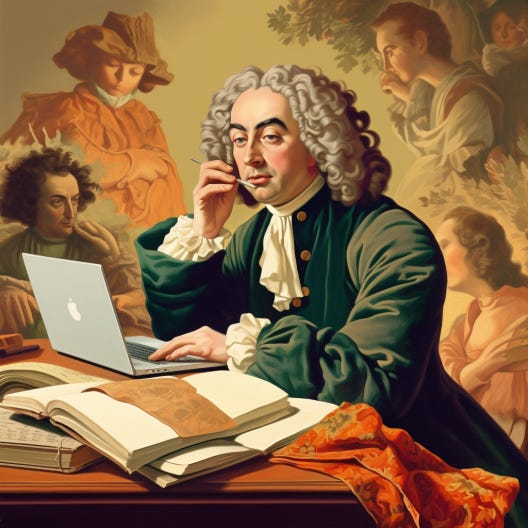
The author of Gulliver’s Travels and “A Modest Proposal” anticipated the Internet by nearly 300 years. He also apparently favored Macbooks. Source: Midjourney.
The worst byproduct of rampant fakery is that it begins to erode our trust in everything. It de-legitimizes every news source. It calls our understanding of what constitutes ‘reality’ into question.
This really started a few years ago with the deliberate perversion of “fake news” (which began life as a description of faux news sites spreading propaganda to help elect the Orange Menace) into a battle cry for people whose entire world view is based on “alternate facts.” Anything that doesn’t fit into that world view can be safely ignored as fake news. Adding Generative AI to the mix is like pouring kerosene onto a dumpster fire of lies.
When you don’t know whom to believe, you start believing no one. When reality is up for debate, we lose the ability to function as a coherent society. Today it’s an amateurish photo of a nonexistent event that was relatively easy to fact check; the next one may not be so so easy to disprove.
Who do you trust and why do you trust them? Share your thoughts below, and feel free to share this blog, early and often.
[1] I say “apparently” because it’s not yet clear to me who determined that AI was used to create it, or how they did it. It could easily have just been just a crappy Photoshop job. Ah, the good old days.
[2] Writer Annette Lyon has an interesting essay on the derivation of this phrase. Is it actually true? Who the hell knows?
[3] Psychological operation. Get used to that word, it’s a new favorite of people of a certain mindset, along with ‘false flag.’
[4] It doesn’t help when certain developmentally arrested billionaires make it easy for any dickwad with $8 to burn to pretend to be a “verified” news source. That faux Bloomberg site got suspended, but nobody knows how many more just like it are out there.

Reply